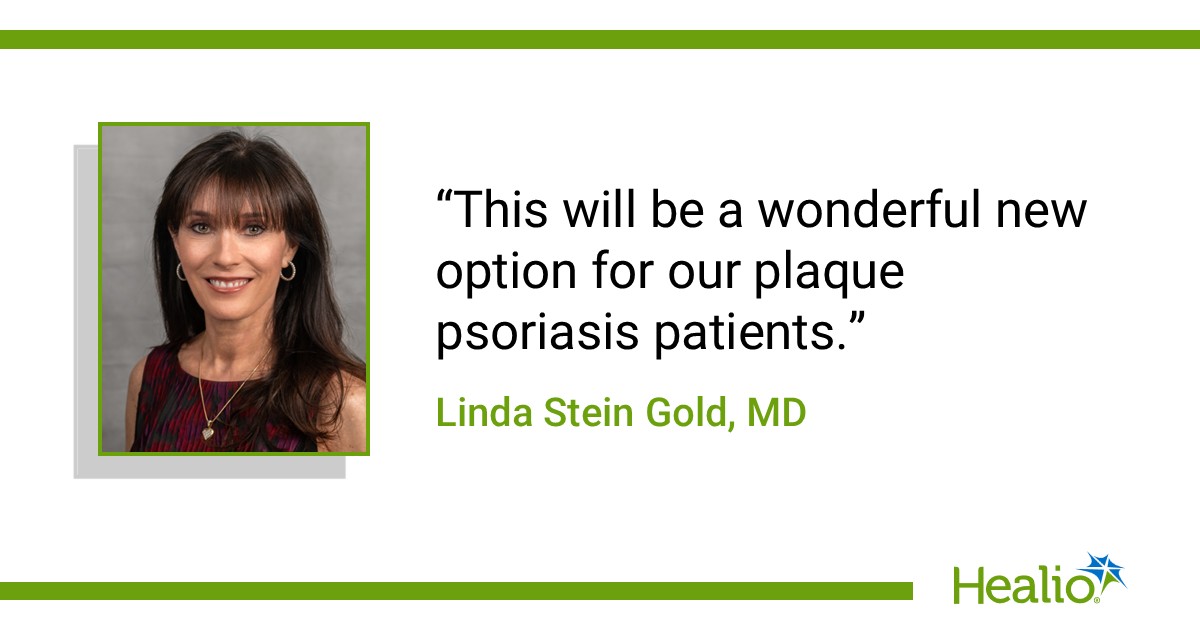October 09, 2025
3 min read
Key takeaways:
- There is an unmet need for a safe and effective oral treatment for moderate to severe plaque psoriasis.
- In two pivotal trials, icotrokinra demonstrated high rates of skin clearance and psoriasis symptom relief.
Icotrokinra demonstrated superiority to placebo and deucravacitinib in the treatment of adults and adolescents with moderate to severe plaque psoriasis, according to two studies.
Part of the ICONIC program, the ICONIC-ADVANCE 1 and 2 studies are phase 3 trials that evaluated the efficacy and safety of icotrokinra (Protagonist Therapeutics, Johnson & Johnson), a first-in-class investigational targeted oral peptide and interleukin-23 inhibitor, compared with both placebo and deucravacitinib (Sotyktu, Bristol Myers Squibb), an oral tyrosine kinase 2 inhibitor. The 24-week results from these studies were presented at the 2025 European Academy of Dermatology and Venerology Congress.

“Deucravacitinib is the most effective oral that we have right now in the plaque psoriasis space,” Linda Stein Gold, MD, director of dermatology clinical research at Henry Ford Health and lead investigator of the ICONIC-ADVANCE trials, told Healio. “What we found that was interesting was that icotrokinra was statistically better, not only vs. the placebo, but also vs, deucravacitinib.”
In ICONIC-ADVANCE, 1,774 adults with moderate to severe plaque psoriasis were randomly assigned 2:1:2 to once-daily oral icotrokinra 200 mg (n = 311), placebo (n = 156) or once-daily deucravacitinib 6 mg (n = 307), respectively. In ICONIC-ADVANCE 2,731 adults were randomly assigned 4:1:4 to the same groups. Participants in the placebo group were given placebo until week 16, after which they were switched to icotrokinra, while the icotrokinra and deucravacitinib arms remained on their dosages through week 24.
The coprimary endpoints for the two studies were an IGA score of clear or almost clear and PASI 90 for icotrokinra vs. placebo at week 16; key secondary endpoints assessed efficacy of icotrokinra vs. deucravacitinib at week 24.
At week 16, results showed 68% and 70% of the participants receiving icotrokinra in ICONIC-ADVANCE 1 and 2, respectively, achieved IGA 0 or 1 compared with 11% and 9% of those who received placebo (P < .001).
A total of 55% and 57% of participants receiving icotrokinra in the respective studies also achieved the second coprimary endpoint of PASI 90 vs. 4% and 1% of those receiving placebo (P < .001).
Assessing secondary efficacy endpoints, researchers found more participants who received icotrokinra in the two studies achieved IGO 0 or 1 compared with deucravacitinib at week 16 (68% and 70% vs. 50% and 54%) and week 24 (74% and 68% vs. 52% and 55%) as well as PASI 90 (66% and 65% vs. 41% and 43%; P < .001 for all).
“What is even more interesting is that when we push that efficacy and ask how many patients get completely clear of their psoriasis, we see double the number of patients on icotrokinra achieve that very high endpoint compared with deucravacitinib,” Stein Gold said.
By week 16, 37% of participants in the two icotrokinra study groups and 16% and 17% of those receiving deucravacitinib reached IGA 0 (P < .001). Similarly, 31% and 32% of those receiving icotrokinra in the two study groups experienced PASI 100 by week 16 compared with 11% and 14% of participants in the deucravacitinib group (P < .001).
“We also found that the side effect profile of icotrokinra was similar to placebo and more favorable than deucravacitinib,” Stein Gold said.
By week 16, 46% and 49% of participants receiving icotrokinra in ICONIC-ADVANCE 1 and 2, respectively, reported one or more adverse events vs. 59% and 54% of participants who received placebo and 56% and 57% of participants who received deucravacitinib.
“What icotrokinra brings to the table is filling an unmet need in the oral space for plaque psoriasis,” Stein Gold told Healio. “We have not had a treatment option that provided good efficacy, safety and tolerability. With icotrokinra, we see all three of these parameters come together. This will be a wonderful new option for our plaque psoriasis patients.”
For more information:
Linda Stein Gold, MD, can be reached at dermatology@healio.com.










